The violins of the great violinists are fascinating works of art. They’ve been coveted for centuries, heard by audiences around the world, and inspired countless musical masterpieces. Some have been stolen; others have been copied; all have been loved.
Today, we’re looking at the violins that five of today’s leading violinists play, as well as the dramatic stories behind them.
What violin does Joshua Bell play?
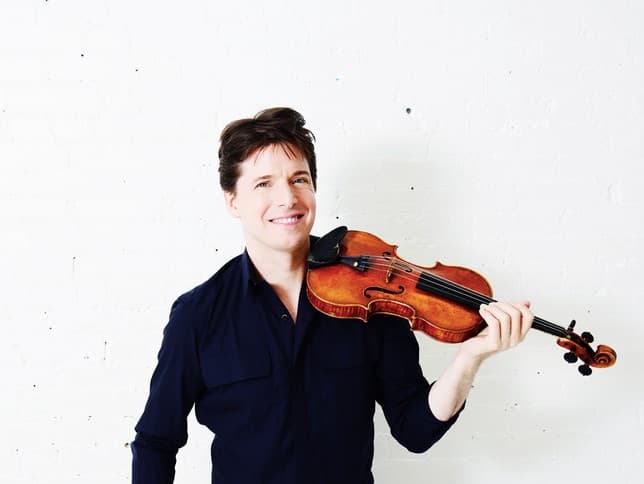
Joshua Bell © charlottesymphony.org
Violinist Joshua Bell plays a violin built by Italian maker Antonio Stradivari in 1713. It is known as the Gibson ex-Huberman.
Polish violinist Bronisław Huberman bought the instrument in 1911 and toured the world with it. In 1919, it was stolen from his Vienna hotel room but recovered a few days later.
Unfortunately, a 1936 theft proved to be more permanent. Violinist Julian Altman stole it from backstage at Carnegie Hall. Afterward, he played on it for fifty years, never breathing a word to anyone about its provenance.
In 1986, Altman made a dramatic deathbed confession about his crime. Learn more about the violin theft.
After Altman’s death, the violin came back on the market.
Joshua Bell came across it by chance in 2001. He was in London to play a concert at the BBC Proms and stopped at the J & A Beare violin shop to buy new strings. The Gibson Stradivarius was in the shop ahead of being sold to a German industrialist, but he was encouraged to try it anyway to see what he thought.
“After playing only a few notes on it, I vowed that [the sale] would not happen,” Bell wrote in 2019. He sold his other violin – another Stradivari known as the Tom Taylor – and purchased the Gibson instead. It remains his concert instrument to this day.
Joshua Bell’s twice stolen Stradivarius violin is still hot
What violin does Hilary Hahn play?
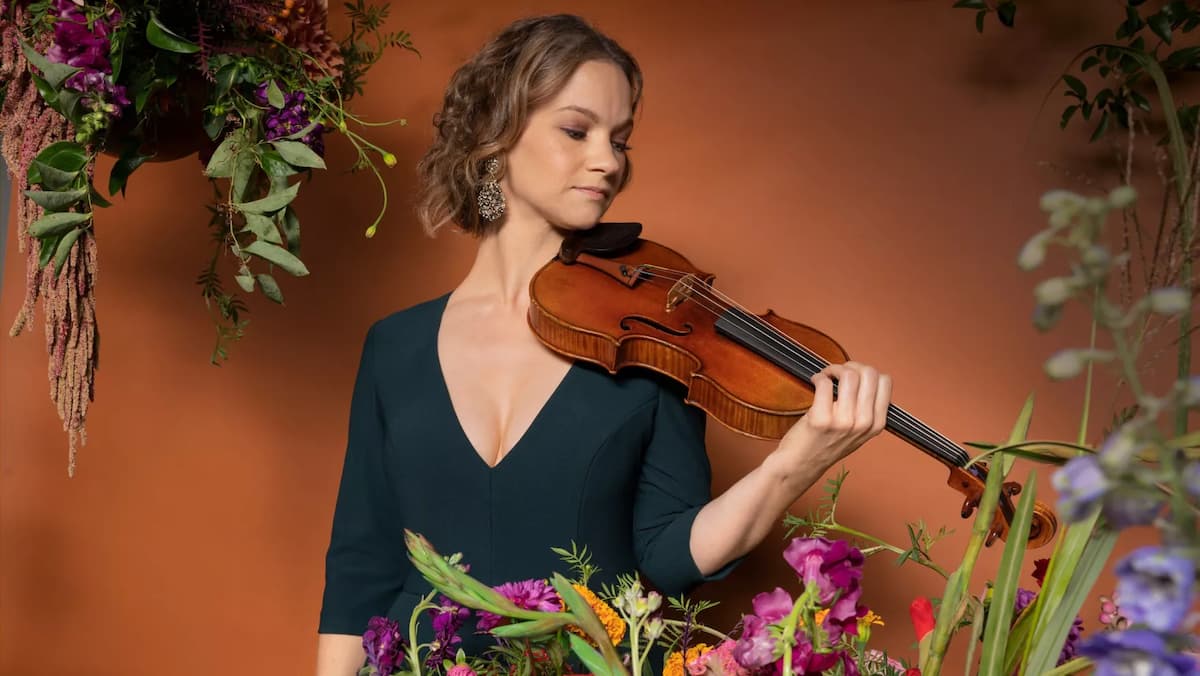
Hilary Hahn © classicalwcrb.org
Hilary Hahn plays a pair of violins made by luthier Jean-Baptiste Vuillaume, one made in 1864 and one made in 1865.
The 1864 instrument is a copy of a famous violin known as Il Cannone, which was built by Italian maker Giuseppe Guarneri del Gesù, while the 1865 Vuillaume is a copy of an instrument known as the Alard built by Antonio Stradivari.
Violin maker and dealer Jean-Baptise Vuillaume was born in Mirecourt, France, in 1798. Over the course of his career, he gained a reputation for the quality of his copies. In fact, many people couldn’t tell the difference between his work and the great Italian masters’.
Before his death in 1840, violinist Niccolò Paganini met with Vuillaume. Paganini owned the Il Cannone violin, but even Paganini, arguably the greatest violinist to ever live, reportedly had trouble distinguishing between the original and Vuillaume’s copy.
Hahn started playing the 1864 Cannone-inspired Vuillaume when she was fourteen years old. She bought the 1865 instrument a few years ago during an auction at Sotheby’s.
It wasn’t necessarily love at first sight: the instrument had to go through months of adjustments before she felt fully comfortable with it. But nowadays, she prefers it over her 1864 instrument, although she does still play both in concert.
She is one of the few modern concert artists who opt against playing an original Stradivari or del Gesù.
Hilary Hahn Performs J.S. Bach: Partita for Violin Solo No. 1 in B Minor, BWV 1002 – 4. Double (Presto)
What violin does Itzhak Perlman play?
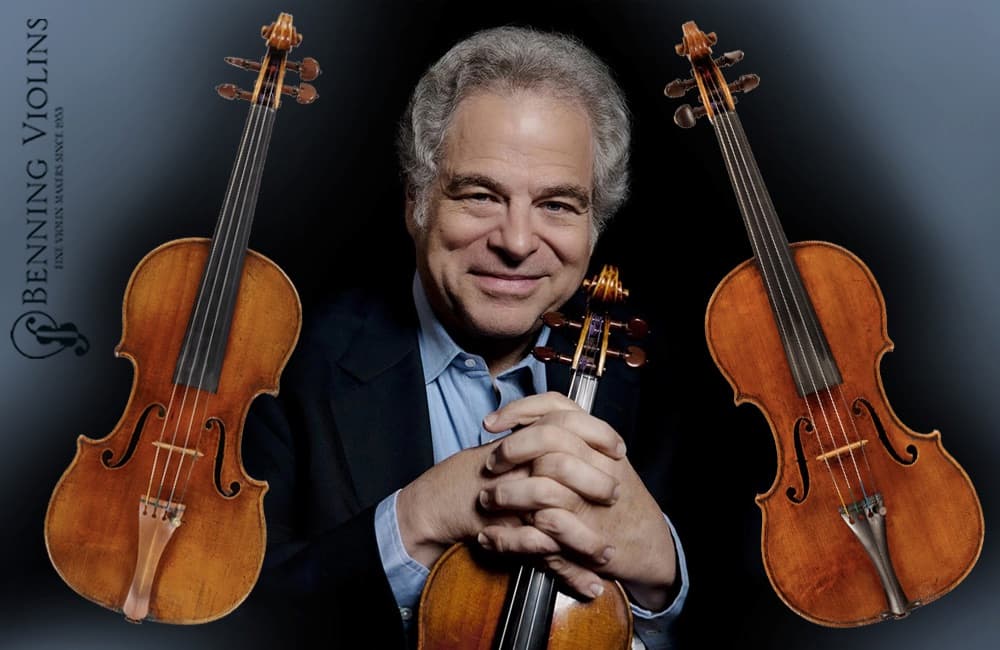
Itzhak Perlman © benningviolins.com
In the late 1960s, when Itzhak Perlman was in his mid-twenties, he was searching for a great violin to buy.
He talked to violin soloist Yehudi Menuhin to track down a lead about a particular instrument he was interested in. At the end of the conversation, he asked if he could try Menuhin’s for fun.
“I played three notes and I thought I was going to die,” Perlman remembered decades later.
How Itzhak Perlman found his Stradivarius
This astonishing instrument was known as the Soil Stradivari, after the Belgian collector Amédée Soil, who had owned it between 1874 and 1911. (In an interesting connection, before Soil, none other than Jean-Baptiste Vuillaume had owned the instrument!)
Menuhin bought it in 1950 and it remained in his possession until 1986, at which point it was finally put on the market. Perlman had just turned forty and taken out a mortgage to buy a house and couldn’t afford the violin, so with his wife’s blessing and encouragement, he took out a thirty-year loan to pay for it. It proved to be a very wise investment!
What violin does Augustin Hadelich play?
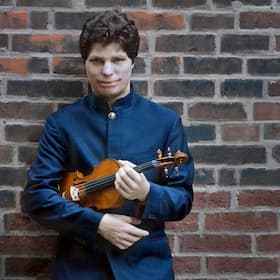
Augustin Hadelich © Paul Glickman
Times have changed since the 1980s. Prices of fine instruments have skyrocketed, and nowadays, few violinists can afford the loans necessary to pay for them. No matter how gifted or famous, most of them need to turn to trusts or owners of private collections to find instruments.
In February 2020 it was announced that violinist Augustin Hadelich had entered into an arrangement with the Tarisio Trust to borrow the 1744 Guarneri del Gesù violin, known as the LeDuc ex-Szeryng. Happily, it is now on extended loan to Hadelich.
Augustin Hadelich and the 1744 Guarneri del Gesù “Leduc, Ex-Szeryng”, loaned through Tarisio Trust
The instrument had been the favorite of Polish violinist Henryk Szeryng from 1970 until his death in 1988. It came to market in February 2020: a particularly fateful month for the performing arts, as we all know! When Hadelich returned to concert platforms after the Covid-19 pandemic, the ex-Szeryng was in tow.
What violin does Anne-Sophie Mutter play?
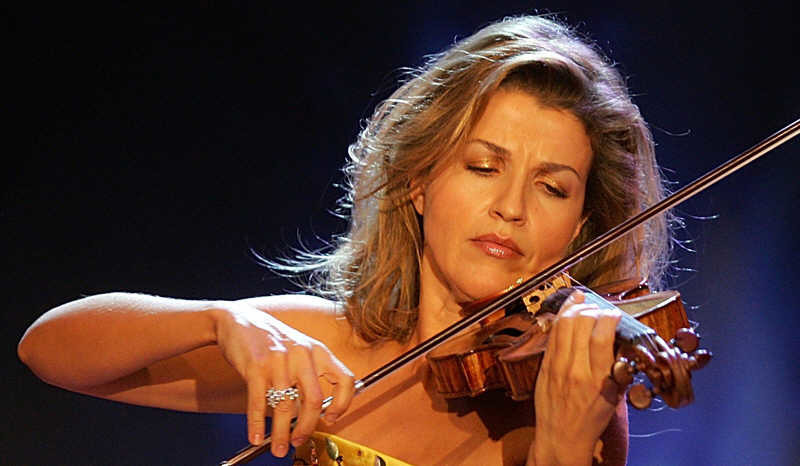
Anne-Sophie Mutter
Violinist Anne-Sophie Mutter currently plays two Stradivari violins.
Her primary instrument is known as the Lord Dunn-Raven, and it was made in 1710. In 1890, wealthy Irish politician Windham Thomas Wyndham-Quin purchased it and owned it until the 1920s, giving the instrument its name.
In April 2020, Mutter said in an interview with Strad magazine, “To say that the ‘Lord Dunn-Raven’ is a better instrument sounds silly, as both Strads are magnificent, but it does have a tiger-like quality to its sound, which means that in the big concertos it can bring a roaring, forceful voice if needed.”
Anne-Sophie Mutter: Tchaikovsky’s Violin Concerto
Mutter bought the Lord Dunn-Raven Strad in 1984 at the violin shop Bein and Fushi in Chicago.
She also plays the Emiliani Stradivari, which was made in 1703 and is named after nineteenth-century Bolognese violinist Cesare Emiliani.
For more of the best in classical music, sign up for our E-Newsletter



